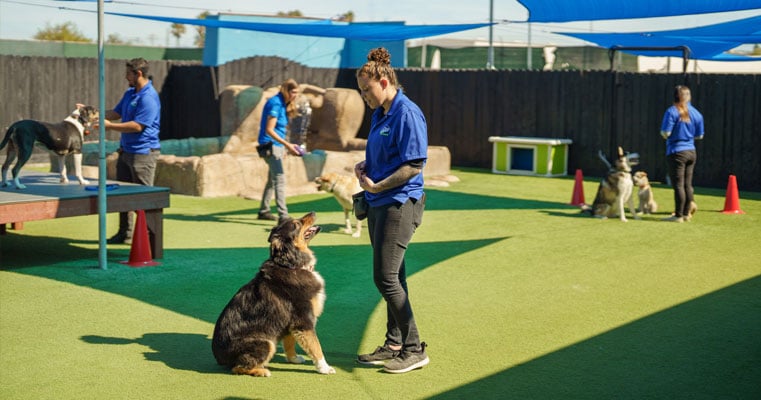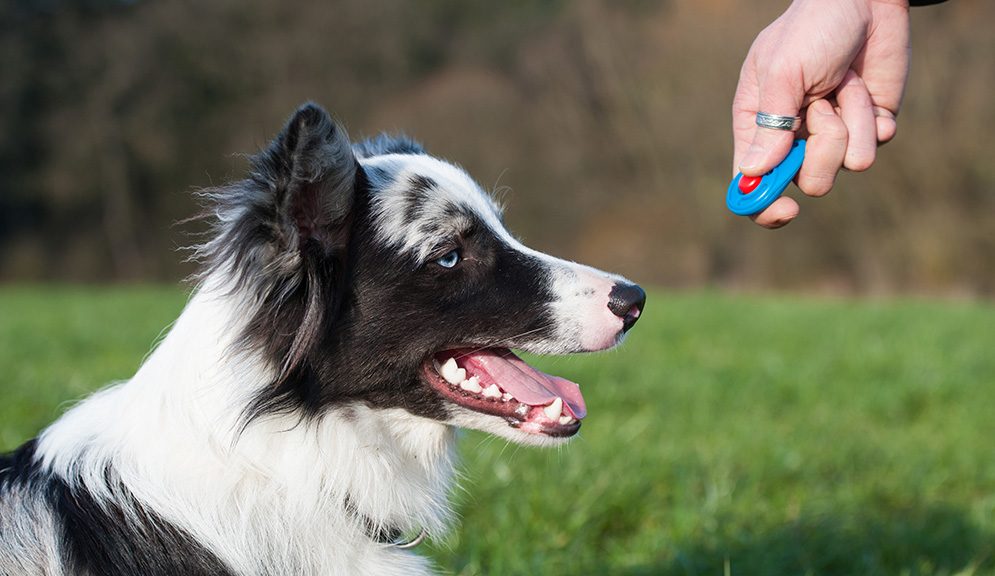Typical Behavioral Issues and Their Solutions in Dog Training
Wiki Article
Important Tips for Effective Dog Training: An Overview for Pet Owners
Effective pet training is a diverse procedure that needs a calculated strategy tailored to both the animal's character and the proprietor's purposes. Recognizing how to browse these barriers can dramatically improve the training experience, inevitably changing the relationship between owner and pet.Recognizing Dog Behavior
Understanding pet actions is crucial for efficient training and promoting an unified relationship between dogs and their proprietors. dog training. Dogs connect primarily with body language, articulations, and actions, making it essential for owners to interpret these signals properly.
Socializing plays a considerable function in dog actions; exposure to different settings, individuals, and various other pets can dramatically impact a pet dog's personality. Variables such as type features and private temperament need to direct training techniques, as some breeds may have particular behavioral qualities that demand customized strategies. By recognizing these elements, owners can produce a helpful atmosphere that encourages positive actions, resulting in successful training end results and a much deeper bond with their animals.
Establishing Consistent Commands
Effective interaction with your dog starts with developing constant commands. This fundamental element of training is vital for cultivating understanding in between you and your pet dog. Consistency in the commands you utilize guarantees that your pet dog can reliably link certain words or phrases with the desired behaviors.When picking commands, choose clear, distinct words that are very easy to claim and differentiate from each other. Avoid utilizing similar-sounding commands that may perplex your dog. For instance, utilizing "rest" and "remain" is proper, yet "rest" and "struck" can bring about misunderstandings.
Furthermore, keep the very same tone and volume for every command. Pets are delicate to vocal hints, so differing your tone can produce complication.
It is similarly vital to make sure that all family members are on the very same web page relating to the commands used. A united front in command usage will prevent mixed signals and strengthen the understanding procedure.
Positive Support Techniques
The power of favorable support in canine training hinges on its ability to urge desired behaviors with rewards and praise. This strategy is grounded in the principle that habits adhered to by positive end results are most likely to be duplicated. By integrating favorable support right into your training regimen, you can efficiently shape your dog's behavior in a positive manner.To carry out favorable support, it's necessary to determine what encourages your canine, whether it be deals with, toys, or spoken praise. When your dog performs a wanted activity, such as remaining on command, right away award them with a treat or love. This organization between the command and the positive outcome enhances their understanding.
click reference It's critical to timing the benefits appropriately; providing the support within seconds of the wanted behavior assists your dog make the connection (dog training). In addition, uniformity is key-- make certain that all member of the family use the exact same commands and reward systems to stay clear of confusion

Slowly, you can lower the frequency of deals with as your pet dog discovers the habits, transitioning to commend or intermittent incentives. This technique not just cultivates a strong bond between you and your pet dog however additionally promotes a favorable knowing setting, making training a delightful experience for both.
Socialization and Interaction
Constantly exposing your dog to a variety of environments, individuals, and other pets is important for their social development. Socializing should start early, preferably throughout the vital window of more 3 to 14 weeks, when puppies are most responsive to new experiences. Nonetheless, older pets can also gain from continuous socialization efforts.Introduce your dog to different settings, such as parks, pet-friendly stores, and metropolitan areas. This direct exposure helps them adjust to numerous stimulations, decreasing anxiousness and anxiety actions. Motivate favorable communications with various other canines and individuals, guaranteeing that these experiences are regulated and safe to promote confidence.
Make use of structured playdates with courteous pets, as this can boost your dog's social skills and teach them appropriate behavior. Obedience courses and training sessions likewise supply outstanding chances for socialization, allowing your dog to connect with others in a supervised atmosphere.
Screen your dog's body language throughout interactions, as this will assist you determine their convenience degree. Progressively boost exposure to even more difficult scenarios while guaranteeing that each experience declares. A well-socialized pet is a lot more likely to show balanced actions, making them a happiness to have in any kind of setting.
Resolving Common Training Obstacles
Every canine proprietor will run into training obstacles at some factor, despite their canine's age or socializing degree. Recognizing typical problems such as stubbornness, diversions, and fearfulness can assist in establishing efficient techniques for renovation.
Progressively present interruptions as the pet becomes more competent in commands. Short, constant training sessions are also efficient in keeping interest.
Fearfulness can impede a pet dog's knowing process. Gradual desensitization to the resource of worry, paired with favorable reinforcement, can aid ease anxiousness. Perseverance is critical; never require a canine right into a scenario that causes distress, as this may aggravate the concern.
Ultimately, understanding and attending to these typical difficulties with an organized technique will cultivate a much more effective training experience, strengthening the bond between pet and owner while promoting reliable understanding.
Final Thought
In recap, successful pet dog training depends on a thorough understanding of canine behavior, the establishment of regular commands, and the application of positive reinforcement see techniques. Socializing plays an essential duty in creating well-adjusted family pets, while resolving common training difficulties needs patience and flexibility. By applying these vital techniques, family pet proprietors can cultivate a strong bond with their pet dogs and advertise preferable actions, inevitably bring about an unified relationship in between human beings and their canine companions.Understanding canine behavior is important for reliable training and cultivating an unified connection in between dogs and their owners.Socializing plays a considerable role in pet dog behavior; exposure to numerous environments, people, and various other animals can considerably affect a canine's personality.The power of positive support in canine training exists in its ability to encourage wanted actions via benefits and praise. By integrating positive support into your training program, you can effectively shape your pet's actions in a useful fashion.
In recap, successful pet dog training counts on a detailed understanding of canine actions, the establishment of consistent commands, and the application of positive reinforcement strategies.
Report this wiki page